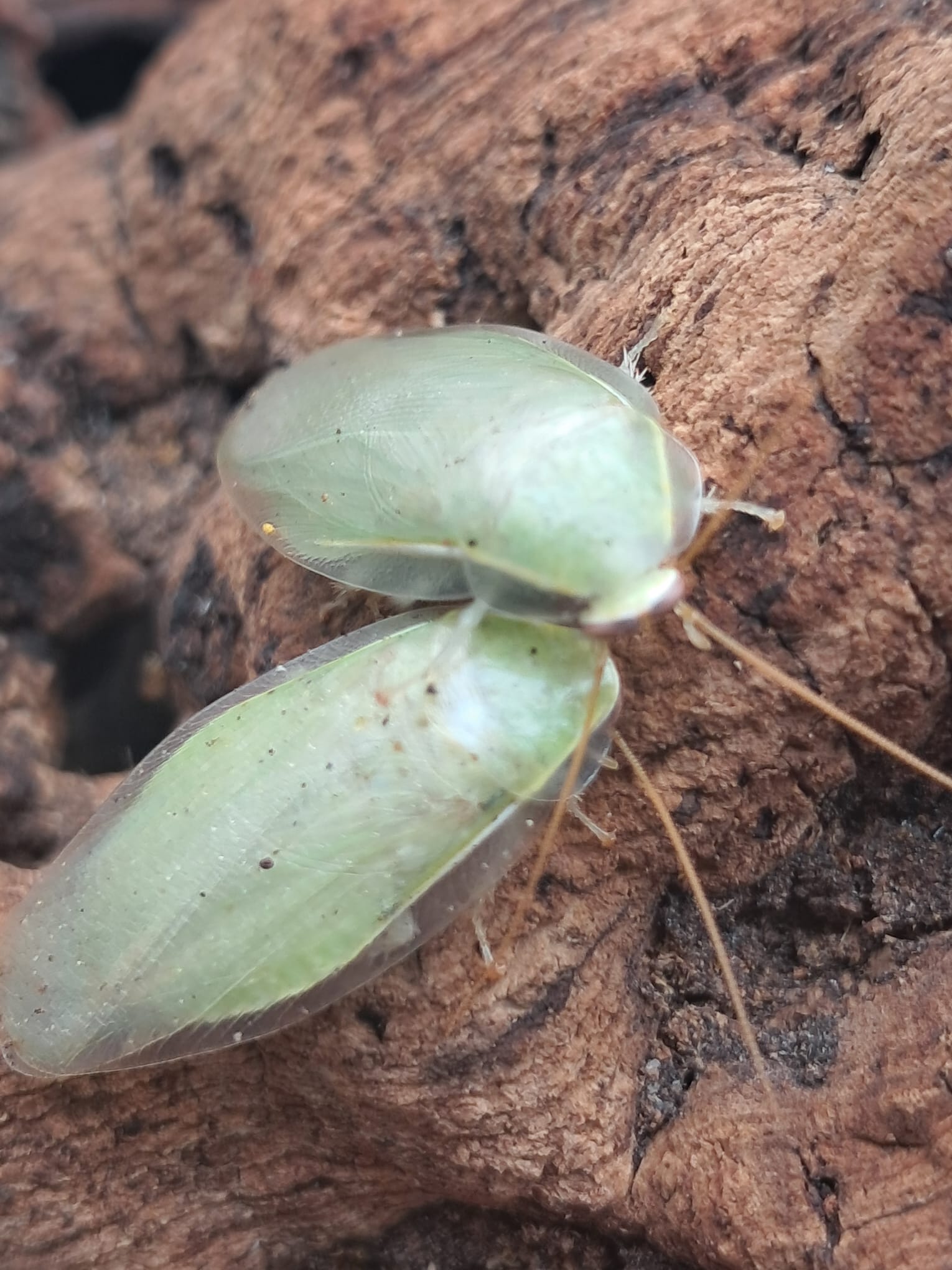
Taxonomy;
Class: Insecta Order: Blattodea Family: Blaberidae Subfamily: Panchlorinae Genus: Panchlora Species: nivea
Origin;
Originating in Central America, Cuba, and the Caribbean, it is now found in the Gulf coast states of the USA in tropical or subtropical climates such as Florida, where it is thought to have arrived in fruit shipments.
Thriving in Cuba’s subtropical climate, this short-lived roach has only one setting: hot and humid. Cuba has two seasons, the wet season and the dry season, with not much difference between them, except that there is more rain, ergo, more humidity in the wet season.
Data from the Havana weather station.
| Jan | Feb | Mar | Apr | May | Jun | Jul | Aug | Sep | Oct | Nov | Dec | Year |
|---|---|---|---|---|---|---|---|---|---|---|---|---|
| 25.8 | 26.4 | 27.7 | 29.6 | 30.2 | 31.2 | 31.7 | 32.1 | 31.7 | 30.0 | 27.8 | 26.7 | 29.2 |
| Jan | Feb | Mar | Apr | May | Jun | Jul | Aug | Sep | Oct | Nov | Dec | Year |
|---|---|---|---|---|---|---|---|---|---|---|---|---|
| 74 | 74 | 70 | 72 | 75 | 79 | 78 | 78 | 80 | 77 | 75 | 75 | 76 |
| Jan | Feb | Mar | Apr | May | Jun | Jul | Aug | Sep | Oct | Nov | Dec | Year |
|---|---|---|---|---|---|---|---|---|---|---|---|---|
| 67 | 47 | 28 | 39 | 42 | 141 | 78 | 126 | 137 | 119 | 101 | 83 | 1008 |
In their native habitat, they can be found in rotting logs, under leaf litter, and in damp, dark locations. Unlike many other cockroaches, Panchlora are primarily outdoor roaches and do not do well inside houses. They are a nocturnal species that have an attraction to light similar to moths.
Description;
Adults have a vivid green colour, complete with long, functional, lace-like wings, which they’re not afraid to use. Nymphs, on the other hand, are small and brown and hide in the leaf litter or burrow, searching for food scraps.
The females are larger than the males, but look identical in shape and colour. Males only reach approximately 15 mm, with females reaching 20-25 mm, sometimes larger.
Fun fact: A group of Panchlora nivea is known as an intrusion
Diet;
Panchlora are scavenging detritivores that will eat just about anything they can find. They’re highly attracted to fresh soft fruits such as bananas, peaches, and pears, but will eat any non-acidic fruits. Vegetables are also taken readily, and some dry foods such as dog or cat biscuits. Beetle/ gecko jellies are also accepted food for this roach.
As a feeder;
Panchlora are a good cockroach feeder replacement for praying mantis and other invertebrates that prefer flying prey. They contain much higher protein levels and lower fat content than many other insect feeders and are considered beneficial.
Enclosure;
Panchlora are a very fast-moving insect that, as an adult it is capable of climbing smooth surfaces with ease, and a band of Vaseline around the top of the enclosure is inadequate as they can fly.
High humidity and reasonable ventilation are required for this cockroach to do well, but I have found that they do equally well inside an enclosed, high-humidity environment without any issues. Storage tubs/ bins are preferred over tanks employing a bioactive environment. 2 inches (5 cm) of topsoil mixed with sphagnum moss and leaf litter and plenty of cork bark as hiding places is adequate.
Breeding;
Keeping them at the correct humidity levels and temperature, and regular feeding, will result in this animal multiplying, provided you have both sexes. Life expectancy is around 6-7 months from birth to death, males live slightly less. 20-35 Eggs are produced inside an ootheca, which is buried or hidden. After 35-40 days, they will hatch into nymphs that will immediately bury themselves in the substrate and search for food. Nymphs are brown or black in colour and tiny. Nymph to adult takes 3-4 months in the right conditions, and then they will live several more months as adults.
Photographs and author: Simon Griffiths, The Mantis Garden
Was this helpful?
1 / 0